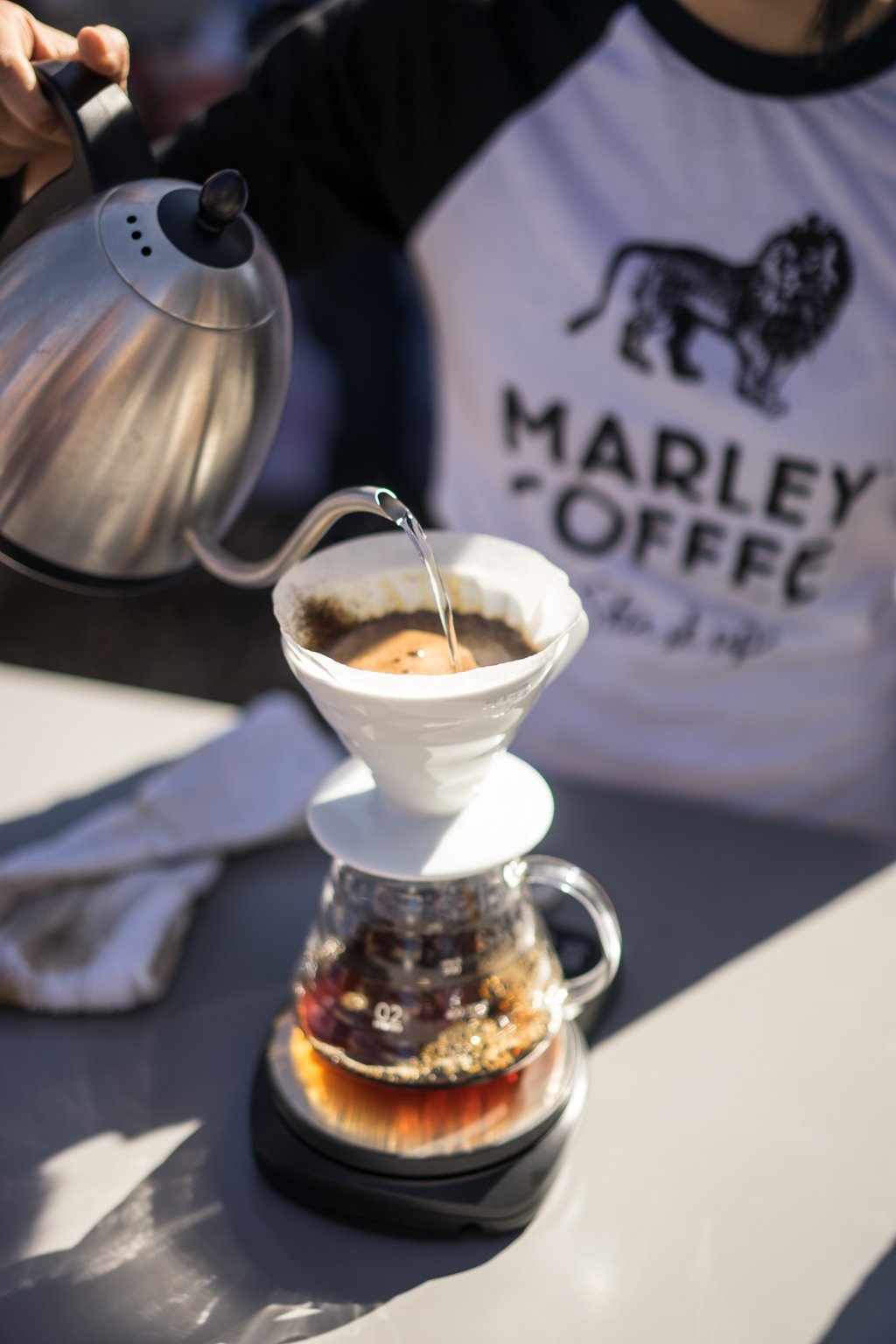Last Sunday kicked off the first-ever Grand Coffee Bazaar. Local roasters and coffee shop owners came together with caffeine connoisseurs to talk shop about this newly budding craft. This event marked the coming of a true new culture in Denver with 15 different purveyors in attendance.
303 Magazine decided to get the scoop on this new movement by asking local roasters to explain the various aspects of craft coffee. Below you’ll get the lowdown on everything you need to know about what goes into that $4 cup of coffee and why it’s more than just a good cup of joe.
History + Origin
Miguel Vicuna, Metropolis Coffee
“The first origins of coffee come from Ethiopia and Yemen. For the longest time coffee was only indigenous to these regions. And the origin story behind coffee is that a goat herder in Ethiopia saw his goats dancing around, making back-flips, being way too crazy for their own good. He followed them back to this bush and saw them eating these cherries. The herder decided to try them and the legend is that he never fell asleep again.”
“The first kind of cup of coffee, we presume, was actually more of a stew. It was probably made in a big vat of water that they would put those in cherries to extract and brew.”
Processing
Jake Brodsky, Novo Coffee
“Processing begins with the coffee cherries. Natural coffees use cherries that are picked and dried with the fruit and skin still on. Washed coffee uses cherries that are picked, peeled and soaked in water to loosen up the rest of the fruit. Washed coffees differ depending upon the origin and different mechanisms used in this process. We also have a semi-washed coffee. There’s a lot of different names for it but here the cherry is peeled but some of the fruit is left on to dry.”
“In naturally processed coffees you get a little more earth, sometimes chocolate. Washed coffees in general have more citrus, a lighter body. And honey or sundried coffees are right in the middle. Processing is just one of the characteristics to that will differentiate coffees.”
Regions
Erin Desmond, Huckleberry Coffee
“Coffee regions have their own particular climates, which influences the way coffee is grown, how it is processed and how it tastes. Coffee plant variety and processing methods are different region to region, and these largely determine flavor profile.”
Africa: “Kenyan coffee is going to have a lot of savory, grapefruit and coconut flavor notes. Ethiopian coffee is going to be very herbal; sort of tea-like, lavender, sage.”
Latin America: “In Latin America, coffee all comes from one plant variety, generally speaking. Which is why you’ll find typical chocolatey, caramel flavor notes.”
Roasting
Light Roasts: “Lighter roasting profiles are going to have more prominent light weight acids and light weight oils. Acids provide more vibrancy in the cup whereas oils contribute to those high notes and aroma characteristics like floral and citrus.”
Medium Roasts: “Medium roasts are going to bring up the perceived sweetness because of the longer duration of caramelization. It will have a greater perception of body, and the acidity is going to be more contextualized within the overall cup. The body and sweetness of the light roast is going to be more evident as it cools, where as it’s going to be more prominent throughout the cup for the medium roast.”
Dark Roasts: “A dark roast is going to diminish the body but increases the inception of fullness due to the reduction of the lighter weight acids and lighter weight oils. It also [increases] the aroma in the cup. This kind of roasting balances out any conflicting aspects of the coffee.”
Brewing
Hannah Ulbrich, Copper Door Coffee
Press Method: “Press methods use actual pressure to extract water from the coffee. It is great for a darker roasted coffee or a medium roast, since it leaves a little of the oils behind, which gives it a fuller mouth-body to them.”
Pour Over Methods: “Pour overs use just gravity and hot water. The pour methods are really great for a lighter roasted coffee. The filter removes some of the oils that are in a darker roast coffee so you don’t get the same punch with them.”
All photography by Roman Tafoya for 303 Magazine. See the full gallery here.











What's to explain? Kraft coffee has been around for a good century. It's called "Maxwell House".